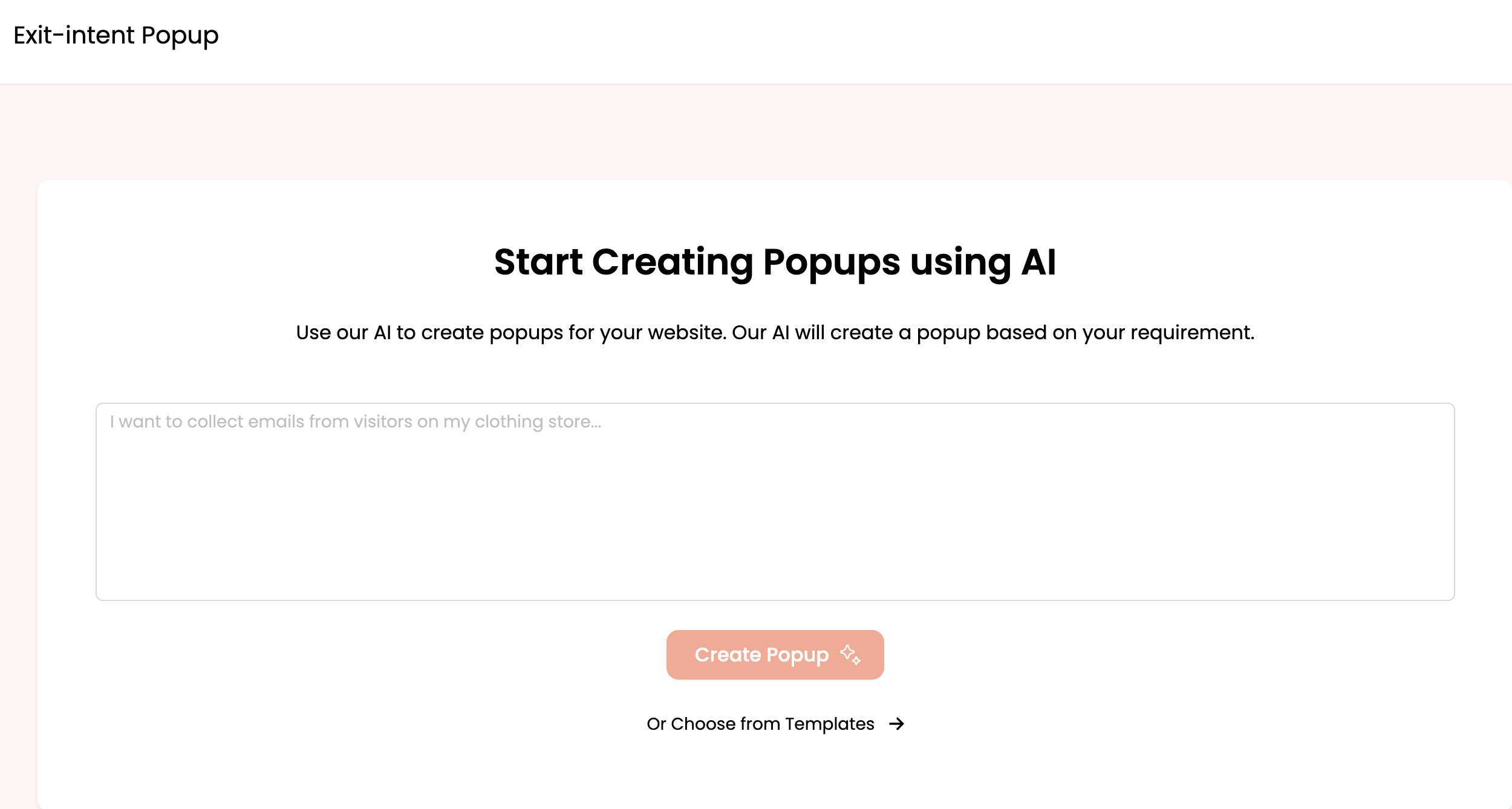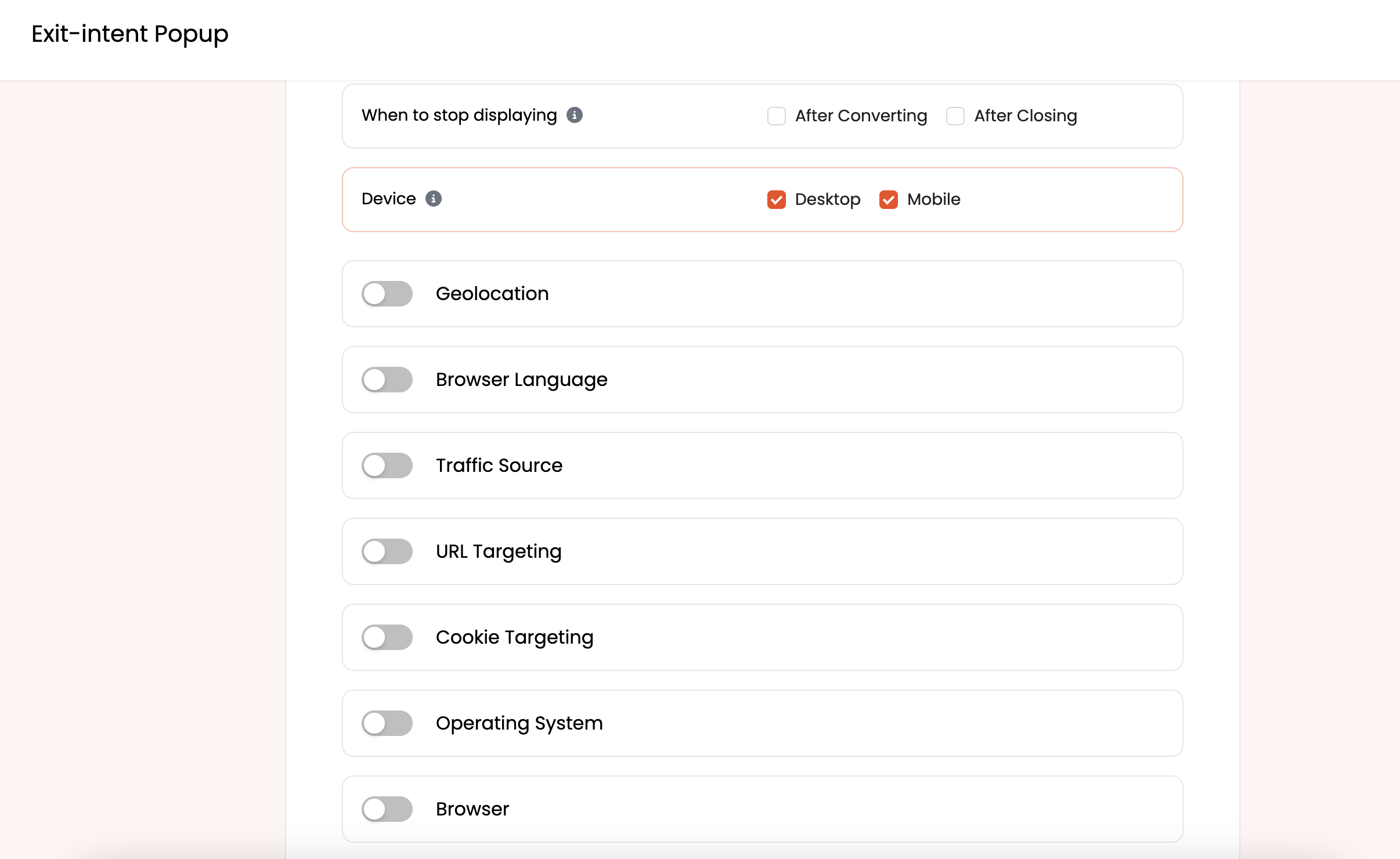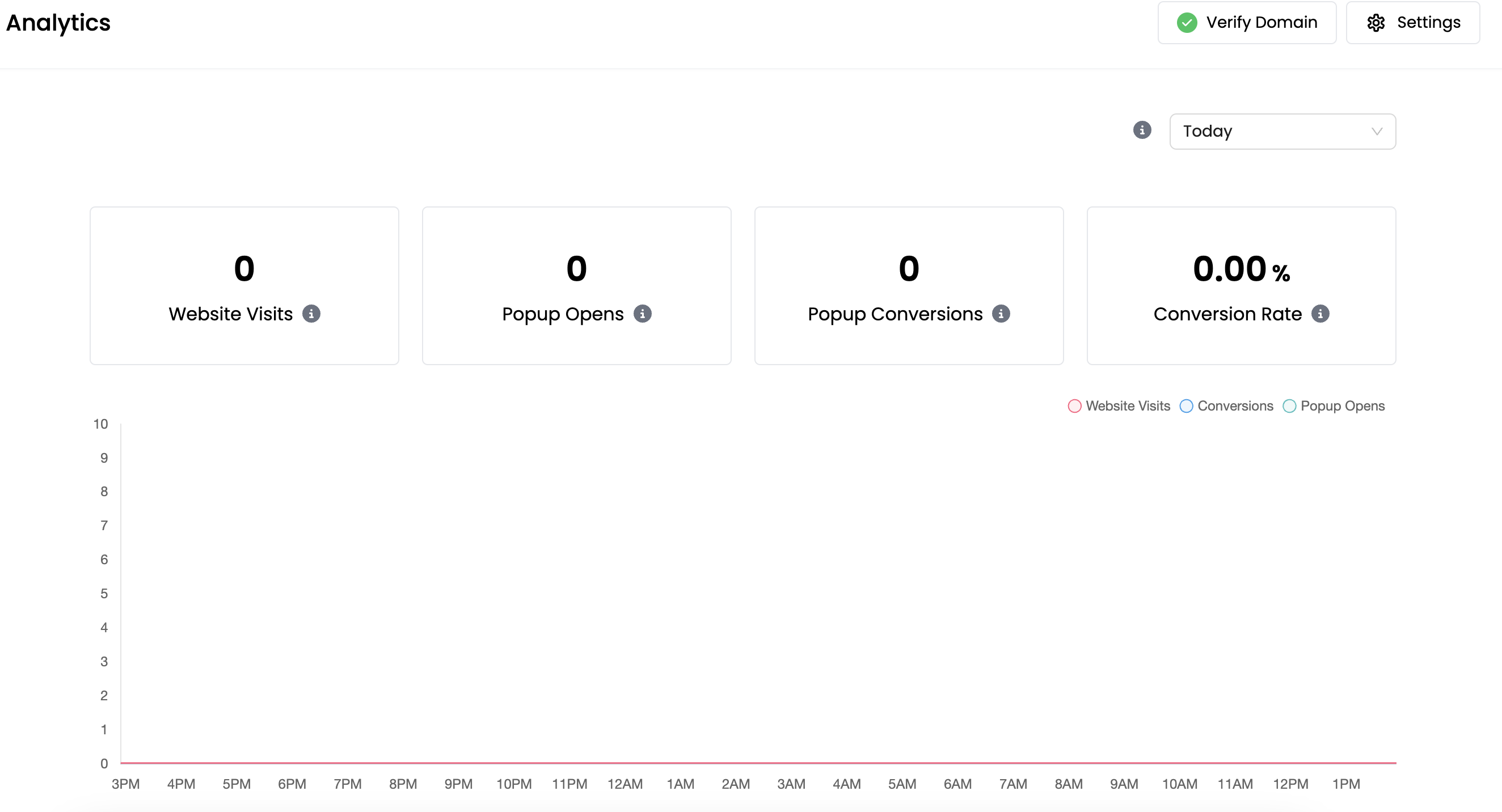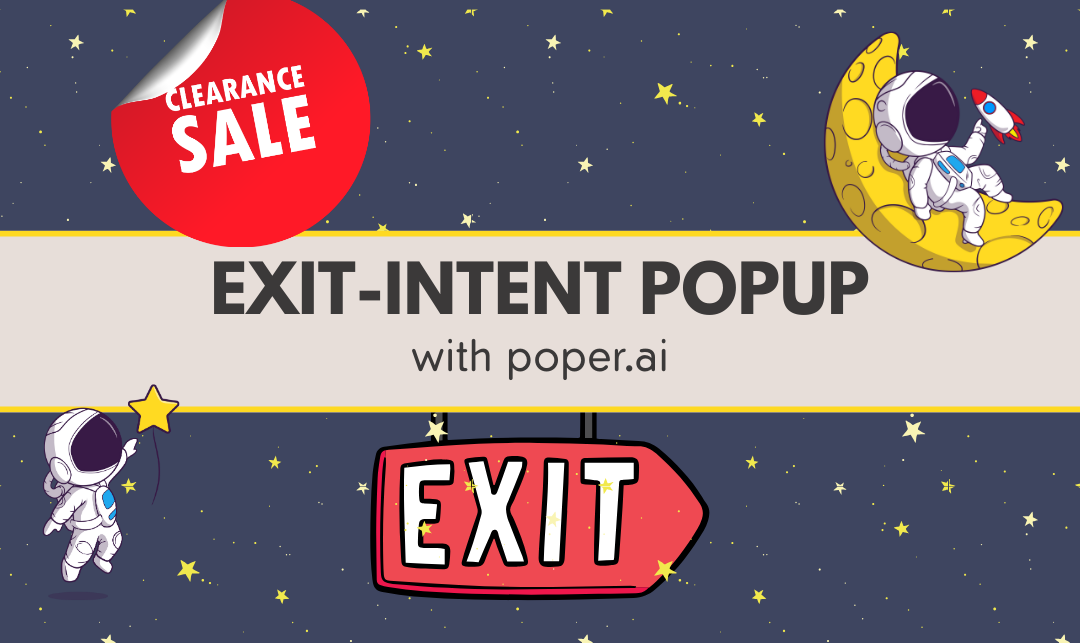Exit-intent popups harness the power of behavioral psychology and meticulous timing to capture users' attention at the crucial moment they decide to leave. It's a digital equivalent of a well-timed conversation that could change someone's mind, making them reconsider their decision to exit. This intervention is not about disruption but about providing value when and where it's most needed. By offering a special discount, a piece of compelling content, or a simple reminder, exit-intent popups can transform a fleeting visit into a meaningful interaction.
To target the featured snippet and beat everyone in the digital marketing game, it's crucial to note that exit-intent popups are effective because they address the user's immediate intent to leave with a compelling reason to stay. This strategic interplay of user behavior and targeted messaging forms the backbone of a successful exit-intent strategy.
The Psychology Behind Exit-Intent Popups
Delving deeper into the mechanics of exit-intent popups, it's crucial to unravel the psychological tapestry that makes them so effective. At their core, these popups leverage fundamental aspects of human behavior to create a moment of pause and reconsideration for the user.
Why Exit-Intent Popups Capture Attention
Behavioral Triggers in Exit-Intent Technology: Human psychology is wired to respond to sudden changes or unexpected offers. Exit-intent popups utilize this innate response mechanism by introducing an unexpected element just as the user is about to leave. This sudden interruption triggers a cognitive pause, making the user more receptive to the message or offer presented.
The Impact of Timing on User Engagement: Timing plays a pivotal role in the effectiveness of exit-intent popups. By waiting until the user is about to leave, these popups ensure that the message is delivered at a time when the user's attention is not divided. This precise timing maximizes the impact of the message, increasing the likelihood of the user taking the desired action.
Crafting Your Exit-Intent Popup with Poper
Creating an exit-intent popup with Poper.ai is designed to be user-friendly, allowing you to engage users who are about to leave your website. Here’s a step-by-step guide to setting up your exit-intent popup:
Step 1: Accessing Popup Creation

Log in to your Poper.ai dashboard.
Navigate to the 'Exit-intent Popup' section to start creating your popup tailored to capturing the attention of departing visitors.
Step 2: Define Your Goals

Start by defining what you want to achieve with your exit-intent popup. For example, you might want to collect emails from visitors on your clothing store.
Input your goal into the provided field to inform the AI of your intentions, such as "I want to collect emails from visitors on my clothing store."
Step 3: Selecting Your Design

Choose from a range of templates designed for various exit-intent purposes, such as special offers, newsletter sign-ups, or last-minute discount prompts.
Select a template that aligns with your objectives and customize it to fit your brand's aesthetic and messaging style.
Step 4: Customize Your Popup

Adjust the design elements of your chosen template, including colors, fonts, button styles, and any graphics or images you want to incorporate.
Ensure the design stands out enough to grab attention without being disruptive to the user's experience.
Step 5: Set Display Triggers

Choose 'Exit Intent' as your display trigger to have the popup appear when the user’s behavior indicates they are about to leave the page.
You can add multiple triggers, such as time on page or inactivity, to fine-tune when the popup will activate.
Step 6: Audience Targeting

Use the AI and audience filtering features to specify which users should see the exit-intent popup. You might target new versus returning visitors or filter by device type.
Set rules for when the popup should stop displaying, such as after the user converts or closes the popup.
Step 7: Integrations

Connect the exit-intent popup to your marketing stack, choosing from integrations like Mailchimp, Klaviyo, or others supported by Poper.ai.
This ensures any data captured by the popup, like email addresses, is automatically passed to your other marketing tools for follow-up.
Step 8: Finalize and Launch

Once your design is complete, and your settings are configured, preview your popup to ensure it operates as expected.
If everything looks good, click 'Save & Publish' to activate your exit-intent popup on your website.
Step 9: Monitor Your Performance

Keep an eye on your Poper.ai analytics dashboard to track the performance of your exit-intent popup.
Monitor metrics such as website visits, popup opens, popup conversions, and overall conversion rate to understand the impact of your popup and make data-driven decisions for any necessary adjustments.
By following these steps, you can create a targeted, visually appealing, and effective exit-intent popup with Poper.ai that engages users at a critical moment, potentially turning exits into valuable conversions or leads.
Technical Integration
Integrating exit-intent popups into your website involves more than just crafting compelling content and design; it requires technical finesse to ensure that the popups function seamlessly within the user experience. This section dives into the essential steps and considerations for effectively implementing exit-intent popups on your platform.
Implementing Exit-Intent Popups on Your Website
Choosing the Right Tool for Your Platform: Numerous tools and plugins are available for creating and managing exit-intent popups, ranging from simple solutions for WordPress sites to more sophisticated platforms for comprehensive websites. Select a tool that integrates well with your site's technology stack and offers the customization options you need to craft popups that resonate with your audience.
Ensuring a Seamless Integration with Your Site's Design: Your exit-intent popup should feel like a natural part of your site, not an intrusive add-on. Ensure that the popup's design aligns with your site's aesthetic, and consider the user's journey to avoid disrupting their experience negatively. Seamless integration helps maintain the user's trust and engagement with your site.
Triggering the Exit-Intent Mechanism
How to Detect User Exit Behavior: Exit-intent technology typically works by tracking the user's mouse movements and predicting when they're about to leave the page. Advanced tools may also analyze scroll behavior and engagement patterns to more accurately trigger the popup at the optimal moment.
Fine-Tuning Sensitivity and Timing: The sensitivity of the exit-intent trigger and the timing of the popup's appearance are critical factors in its effectiveness. Too sensitive, and the popup may annoy users by appearing too early; too delayed, and it might not be seen at all. Fine-tuning these parameters requires testing and optimization to find the sweet spot that maximizes user engagement without being intrusive.
Best Practices for Exit-Intent Popups
To maximize the effectiveness of exit-intent popups and ensure they contribute positively to the user experience, adhering to best practices is essential. These guidelines can help fine-tune your strategy, ensuring that your popups engage users without becoming a nuisance.
Timing and Frequency
Determining the Best Timing for Popup Display: The timing of your exit-intent popup is crucial. It should appear at a moment when the user is likely to be most receptive, typically just as they're about to navigate away from your site. This requires understanding your audience's behavior on your site to predict the optimal timing for engagement.
Managing Frequency to Avoid User Annoyance: Overuse of popups can frustrate users and lead to negative experiences. Limit the frequency of your exit-intent popups to avoid overwhelming your visitors. Consider setting a cookie to ensure that the popup doesn't appear more than once per user session, or even less frequently, depending on your audience's tolerance.
User Experience and Customization
Ensuring a Non-Disruptive User Experience: While exit-intent popups are designed to capture attention, they should not disrupt the user's experience or detract from the content of your site. Ensure that your popups are easy to close and do not obstruct important site content.
Personalizing Popups Based on User Behavior and History: Customization can significantly increase the relevance and effectiveness of your exit-intent popups. Use data on user behavior, such as pages visited or time spent on site, to tailor your messages and offers. Personalized popups resonate more deeply with users, making them more likely to engage with the content.
Best Practices for Exit-Intent Popups
Maximizing the effectiveness of exit-intent popups requires more than just a well-designed message and seamless technical integration. Adhering to best practices in timing, frequency, user experience, and customization can significantly enhance their impact, ensuring they serve as a valuable tool in your digital marketing strategy rather than a nuisance to your visitors.
Timing and Frequency
Determining the Best Timing for Popup Display: The optimal moment to display an exit-intent popup can vary based on the webpage and the user's behavior. Generally, it's best to trigger the popup after the user has had enough time to engage with the content but appears ready to leave. This timing can be determined through analytics and user behavior analysis.
Managing Frequency to Avoid User Annoyance: Overexposure to popups can frustrate users and dilute the effectiveness of your strategy. Implement frequency caps to ensure a user doesn't see the popup too often, especially if they've already interacted with it. Tailoring the frequency to the user's engagement level can help maintain a balance between capturing attention and providing a pleasant user experience.
User Experience and Customization
Ensuring a Non-Disruptive User Experience: While exit-intent popups are designed to capture attention, they should not disrupt the user's experience or detract from the content. Ensuring that popups are easy to close and do not require excessive information to interact with is key to maintaining a positive user experience.
Personalizing Popups Based on User Behavior and History: Customization can significantly increase the relevance and effectiveness of exit-intent popups. Using data on user behavior, past interactions, and preferences allows you to tailor messages and offers to match individual users' interests, increasing the likelihood of engagement.
A/B Testing and Analytics
To truly master the art of exit-intent popups, one must delve into the realms of A/B testing and analytics. These practices are not just beneficial—they're essential for refining your strategy and ensuring that your popups are as effective as they can possibly be.
Optimizing Your Exit-Intent Strategy
How to Set Up Effective A/B Testing: A/B testing involves comparing two versions of your popup to see which performs better in terms of user engagement and conversion rates. By systematically testing different elements, such as the headline, offer, design, and timing, you can identify what resonates best with your audience. Use a control version (A) and a variation (B) to test one change at a time for accurate results.
Analyzing Data to Refine Popup Performance: Utilize analytics to gather data on how users interact with your popups. Metrics such as the popup's open rate, interaction rate (e.g., clicks on the offer), and the conversion rate are critical for assessing performance. This data not only helps in understanding what works but also provides insights into user behavior and preferences, informing broader marketing strategies.
Leveraging Insights for Continuous Improvement
The insights gained from A/B testing and analytics should guide the ongoing optimization of your exit-intent popups. Look for patterns in the data that indicate user preferences and test new ideas based on these insights. Remember, the digital landscape and user behavior are always evolving, so what works today might not be as effective tomorrow. Continuous testing and refinement are key to maintaining the effectiveness of your exit-intent strategy over time.
Legal and Ethical Considerations
Incorporating exit-intent popups into your website strategy also requires a keen understanding of the legal and ethical considerations surrounding their use. As digital marketing practices come under increased scrutiny, ensuring your exit-intent popups comply with privacy laws and ethical guidelines is essential for maintaining user trust and avoiding potential legal issues.
Navigating Privacy and Consent
Understanding Cookie Laws and Consent Requirements: Many regions, including the European Union with the GDPR (General Data Protection Regulation), have strict laws regarding the use of cookies and the collection of personal information. Since exit-intent popups often use cookies to track user behavior, it's crucial to ensure that your website provides clear information about this practice and secures user consent where necessary.
Best Practices for Maintaining User Trust: Transparency and respect for user privacy are the cornerstones of ethical digital marketing. Clearly inform users about what data your popups collect and how it will be used. Providing an easy option for users to opt-out of data collection or popup interactions can also help maintain a positive relationship with your audience.
Conclusion
The journey through the intricacies of exit-intent popups reveals a landscape rich with opportunity for enhancing user engagement and conversion rates. From understanding the psychological underpinnings that make these tools so effective to mastering the art of crafting compelling messages and integrating them seamlessly into your website, exit-intent popups emerge as a nuanced strategy for digital marketers.
FAQs
Can exit-intent popups be used on mobile devices?
Yes, exit-intent popups can be adapted for mobile devices, although the approach differs from desktop usage due to the absence of a mouse to track exit behavior. On mobile, exit-intent can be triggered by actions such as scrolling behavior indicating the user is about to leave or switching between tabs. It's crucial to design these popups with mobile user experience in mind, ensuring they are unobtrusive and easily dismissible.
How do I prevent exit-intent popups from affecting my SEO?
Exit-intent popups, when implemented correctly, should not negatively impact your SEO. Google’s primary concern with popups pertains to intrusive interstitials that hamper the user's ability to access content on the page, especially on mobile devices. As long as your exit-intent popups are designed to be non-intrusive, provide value, and do not block immediate access to content, they should not affect your SEO. However, it's always good to stay updated on Google's guidelines regarding popups and interstitials.
What is the average increase in conversions I can expect?
The increase in conversions resulting from exit-intent popups can vary widely depending on several factors, including the offer's relevance, popup design, website traffic quality, and how well the popup aligns with user intent. Some businesses report increases from 10% to 50% in specific metrics such as newsletter signups or completed transactions. However, achieving significant improvements often requires ongoing testing and optimization.
How do I make sure my exit-intent popups are not blocked by pop-up blockers?
Most modern pop-up blockers are designed to block unsolicited pop-ups, typically those that open in new windows or tabs without user interaction. Since exit-intent popups are triggered by user behavior on the site and usually appear within the same window, they are generally not blocked by pop-up blockers. Ensuring your popups are perceived as a natural part of the user experience can help avoid triggering these blockers.
Are there any industries where exit-intent popups are particularly effective?
Exit-intent popups can be effective across a wide range of industries, especially where there's a clear opportunity to offer immediate value in exchange for engagement. E-commerce sites often see great success with exit-intent popups by offering discounts or free shipping to users about to leave. Content-heavy sites, such as blogs and news outlets, can use them to promote newsletter subscriptions or premium content access. However, the key to success in any industry is tailoring the popup's message and offer to the specific interests and needs of the target audience.




